Discover How Positive Reviews Can Triple Your Website Traffic and Revenue
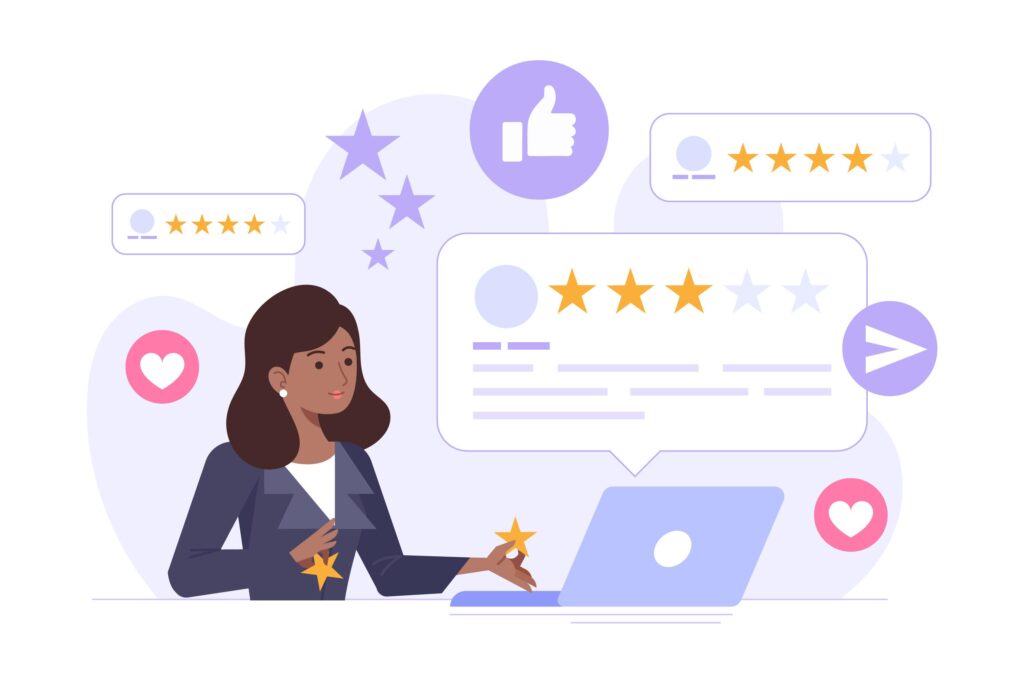
Positive reviews are the goal of any business owner, yet many fail to take use of this feedback. When handled properly, positive reviews may be a very effective tool for increasing the growth of your business.Positive reviews are more than just flattering statements; they are essential to establishing your business credibility and visibility on the internet. Millions of Nigerians will tell you that they like to shop so effort. Naturally, you’ll find yourself in discussions where individuals discuss where they’ve purchased certain items or which online retailers are the greatest. Therefore, having excellent items is no longer sufficient. In addition to having reviews, you should post them publicly for everyone to see. This post will discuss the value of customer reviews, how to get them from your clients, and how using them to increase sales. The Importance of Customer Reviews Since the majority of people shop online and rely on these ratings when making judgments about what to buy, customer reviews are now essential to businesses. It is impossible to overestimate the impact of consumer feedback because it is a potent instrument for your brand. Why should you gather reviews from customers? Best Practices for Collecting Customer Reviews You might find this difficult as a business owner for a few reasons. We know Nigerians, so it’s possible that your consumers are simply stubborn or in too much of a rush. Or perhaps you haven’t made the process simple for them. Here are a few strategies that will work to persuade a consumer to write a positive review for you. Best platforms for customer reviews and how to display them It is now evident that displaying positive evaluations for your company is crucial. You can craft an engaging story that appeals to potential clients and motivates them to interact with your brand by carefully showcasing satisfying customer experiences. Let’s examine these three crucial actions you may do to effectively display favorable evaluations and enhance the perception of your company. To maximize the impact of customer reviews, the best platforms must be chosen for their display. Various platforms serve different functions in the customer journey and cater to different audiences. The top four systems for collecting and displaying customer evaluations are shown below, along with instances of how companies have effectively used them: Google My Business: Google My Business evaluations can greatly increase your company’s visibility and reputation as it serves as a major touchpoint for people conducting online searches. For example, by placing favourable evaluations directly in the search results, a neighbourhood café might draw more customers and establish itself as a favourite among coffee drinkers. Instagram: Leveraging Instagram for sharing customer reviews offers a visual and engaging way to highlight positive experiences. For example, a clothing brand can share customer photos wearing their products, coupled with positive captions or stories, turning satisfied customers into brand ambassadors. Yelp: Well-known for influencing customer choices, Yelp evaluations have the power to increase foot traffic and foster confidence, particularly for nearby establishments, eateries, and service providers. Assume a salon wants to draw in new customers by showcasing its stellar Yelp ratings and reviews on its website or in promotional materials. TripAdvisor: TripAdvisor reviews are a great source of positive feedback for companies in the travel, tourist, and hospitality sectors. To attract tourists searching for a distinctive and well-regarded location to stay, a boutique hotel, for example, can showcase positive ratings on its website. Including reviews on your company website Apart from the aforementioned venues, your own website is an excellent venue for showcasing online reviews. Potential clients can be greatly influenced by including a reviews section or a special testimonials page. Online merchants frequently include reviews on product sites so that customers may evaluate the efficacy and quality of their products directly from other users. For instance, an eCommerce website can show product reviews on individual product pages, giving customers instant social proof. Furthermore, establishing a specific testimonials page provides a more thorough examination of client satisfaction by presenting more thorough comments or success stories. Even in less expected places, like the checkout page, brief customer quotes can reassure buyers about their decisions. This approach not only enriches the user experience but also strengthens the trust in your brand and services, encouraging more conversions and engagement from site visitors. Conclusion For companies trying to boost conversion rates, improve their internet visibility, and establish credibility, positive reviews are crucial. Additionally, you must put a series of tactics into place to motivate consumers to write favorable product evaluations. Utilize the advantages of both channels by incorporating favorable Instagram reviews into your company website using tools like Spotlight. More than just a marketing tactic, promoting and showcasing favorable reviews is a means of building a relationship with prospective clients and establishing a reliable brand image. Put these strategies into action to maximize the impact of favorable ratings and advance your company. Turn positive reviews into powerful growth tools with Dgazelle’s expert digital strategies. Let us help you triple your website traffic and revenue.
How to Quicky Increase E-commerce Conversion with Simple A/B Testing
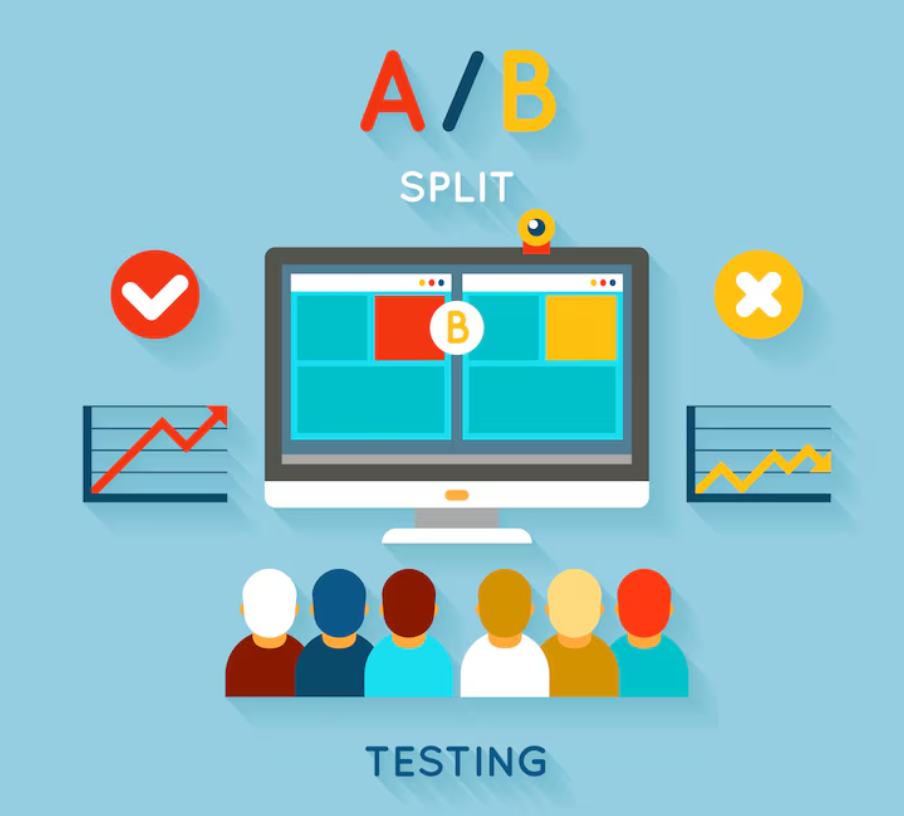
Before launching your campaigns, it’s a good idea to create many variations of anything. This is where A/B testing comes into play. It aids in optimizing the success of marketing initiatives designed to increase website visitors. Many marketers are not using A/B testing effectively, despite the fact that it is one of the most effective and proven techniques to evaluate your marketing efforts and conversion funnel. What do they not have? Is it worthwhile? We are available to address any additional queries you may have! What is A/B Testing? Simply said, A/B testing is an experimental procedure that compares two versions of website elements, such as a landing page, exit-popup, sidebar, navigation menu, or any other marketing asset, in order to assess the performance differences. It is also known as split testing or bucket testing. To determine which version of the element maximizes conversions and drives the selected business metrics, different segments of website users are presented the two versions of the element. Let’s examine the specifics of A/B testing. Why Is A/B Testing Actually Necessary? The first step in marketing is to create a website or landing page. After the design is complete, you must choose the strategies that will boost sales and conversions. Here’s when A/B testing comes in handy. A/B testing can benefit your company in the following ways: One of the most popular methods for conversion optimization nowadays is A/B testing. Its growing popularity is matched by the expansion of tools for conducting A/B testing and analyzing the outcomes. Key Elements of A/B Testing for Higher Conversions Not all A/B testing components yield the same results. To boost conversions, focus on testing impactful elements. Call-to-Action (CTA): Your CTA drives action, influencing whether visitors purchase, sign up, or engage further. Test variations like background color, text, and placement to see what improves conversions. Headlines & Copy: Headlines are the first thing visitors see. If they aren’t engaging, visitors may leave. Ensure they are concise, attention-grabbing, and clear. Test different fonts, styles, and messaging to find what resonates with your audience. Popups & Overlays: Popups can be effective when used correctly. Test different designs, copy, and animations to find the best balance between grabbing attention and avoiding annoyance. Subject Lines: A compelling subject line is critical for email marketing success. With an average open rate of 22%, experiment with phrasing, questions, emojis, and power words to boost email open rates. Images & Videos: Visual content is a major marketing tool, with 49% of marketers considering it essential. Test different visuals, such as infographics, videos, and product images, to see what enhances user engagement. Landing Pages: Landing pages are vital for promoting products and services. Use heat maps to track user clicks and test different layouts, product descriptions, and testimonials to optimize conversion rates. Social Proof: Reviews and testimonials are powerful conversion tools. Test various forms of social proof, such as star ratings, customer quotes, or badges, and experiment with their placement and format to find what works best for your audience. Types of A/B Testing After covering A/B testing, let’s explore other testing methods. Split URL Testing: Unlike A/B testing, where minor front-end changes are made, split URL testing involves designing a completely new version of the web page. Traffic is divided between different URLs to compare their performance, helping determine which version converts better. Multivariate Testing: This method tests variations of multiple page elements simultaneously to find the best combination. It’s more complex and ideal for advanced marketing strategies, allowing marketers to save time by testing multiple elements at once. Multipage Testing: This type of testing evaluates changes to specific elements across multiple pages. In Funnel Multipage Testing, entire sales funnel pages are redesigned and tested. Classic Multipage Testing focuses on adding or removing specific elements like testimonials or images to assess their impact on conversion rates. These testing techniques offer more advanced options for optimizing website performance, complementing traditional A/B testing. Step-by-Step A/B Testing Guide to Improving Lead Generation & Conversions Rate A/B testing offers a methodical way to determine which of your marketing campaigns performs better. But it must be carried out using a clear procedure. The following procedures are part of the A/B conversion rate testing. Select a variable and establish objectives and KPIs You have to conduct research and make conclusions before you can conduct an A/B test. You can test as many aspects as you like, but you must first prioritize which elements should be examined first by choosing those with the highest payout. To ensure that every version is handled equally, you have to configure the test’s parameters. After determining the variable, you must select your success metric. Are conversions your goal? Shopping cart disappearance? Rate of bounces? Sales? When choosing the objectives and carrying out your tests, you must eliminate as many “gut feelings” and presumptions as you can. Predefining your constants and variables can help you focus on the right things and prevent you from seeing misleading results. Choose the Page and A/B Test Elements Start with the most significant or popular webpage you have. This might be your best-performing landing page or homepage. Whichever path you take, make sure it’s directly related to your metrics. Once the page has been chosen, analyze every element to see what can be enhanced, including the navigation menu, popup window, CTAs, images and videos, reviews, case studies, and so on. Make sure you make a small change to the current content to observe how it affects metrics. Prioritize the pieces based on what you believe will have the biggest impact on conversions. Produce Alternatives Make a variation based on the above hypothesis and compare it with the existing version. To improve your analysis of the findings, just make the changes you decided upon in the previous stage, and only one change at a time. For instance, alter the button size, text, font, color, and CTA when testing your popup window. You can then modify the backdrop picture or input areas. Keep
5 Simple Ways to Improve Your Conversion Rate
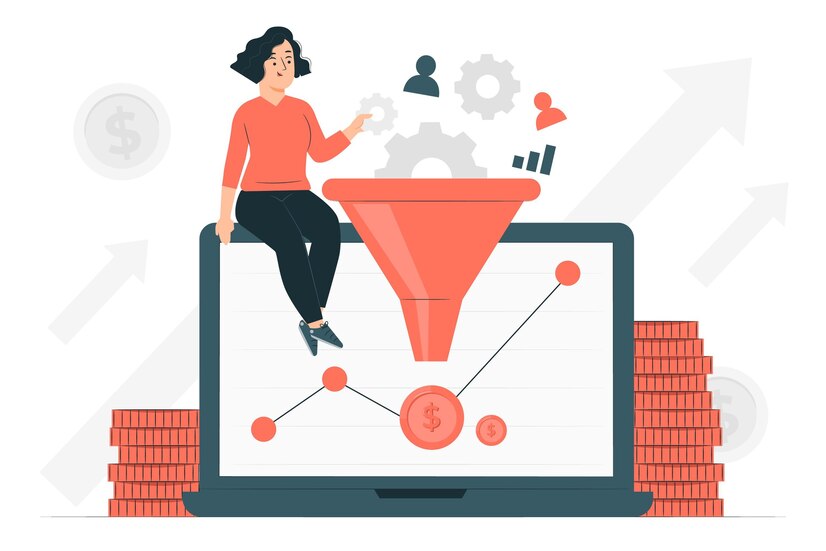
Conversion rate, often known as CVR, is the proportion of users who have finished an action that they intended to do. A free trial, inquiry, or email newsletter sign-up are all examples of possible actions; however, the action is usually utilized when a user fills out a form and submits personal information. Additionally, a real order on an e-commerce website is referred to as a conversion. If your website is getting a lot of visitors but your conversion rate is still low, there’s probably a problem with your forms, content, site layout, or something else entirely. But, you can be passing up a ton of fresh leads, depending on where the problem is. Ways of computing conversion rates The number of conversions divided by the total number of sessions (site visits) is the formula to get your conversion rate. For instance, if you had 1000 sessions that month and 10 queries, then 10 ÷ 1000 = 0.01 is your conversion rate; expressed as a percentage, this translates to 1%. What differentiates CVR from CTR Conversion rate and “click-through rate,” or CTR for short, are two different metrics that are sometimes misconstrued. Ultimately, their acronyms are nearly identical. However, click-through rate indicates the number of clicks you obtain in comparison to impressions or views when it comes to an email link or advertising campaign. Divide the total number of impressions by the number of clicks to get the CTR. Typical reasons for low conversion rates In general, websites have an average conversion rate of only 2.35%. Nonetheless, it is reported to be roughly 10% in the case of well-known brands. It’s important to keep in mind, though, that the typical conversion rate varies greatly depending on your industry and whether you’re selling to consumers or businesses. To find out what the number should be in your market, conduct some research. However, there are three typical explanations that result in an abnormally low conversion rate regardless of the industry. Market shifts Every year, more businesses are focusing on SEO and internet promotion. This indicates that, in the midst of countless other websites with excellent content or sponsored advertisements, it is becoming more and more difficult to direct web traffic to your website. You will therefore inevitably have less site traffic and, eventually, fewer conversions if you are not upgrading SEO or advertisements at the same rate as everyone else. Additionally, more general shifts like seasonality or dwindling product demand could be impacting your CVR. Problems with the website’s architecture Even if a website may have a million distinct issues, it may come out as unreliable if it is overly busy, overflowing with information, or underdeveloped, missing essential components. If not, the call to action might not be obvious enough, or the routes leading to the conversion point—such as the inquiry form—could be overly complicated and drawn out. Perhaps your website doesn’t even have a “contact us” button, or if it does, it’s hidden somewhere, making it difficult for visitors to find how to send you a query. A site that gives the wrong impression or has a confusing structure often leads to a high bounce rate – which is exactly what we want to avoid Inefficient marketing Maybe the message of your advertisement isn’t connecting with your target audience, isn’t optimized for the proper keywords, or wasn’t intended to reach the right demographic in the first place. Even if someone clicks on the advertisement and is directed towards an audience that doesn’t seem to need your products, there’s less chance that they will take the time to complete a form and become a customer. Strategies for raising your conversion rate Make sure the correct audience sees your adverts. You must perform keyword research to determine which keywords have a large search volume compared to low competition if you want to see the best results from your ad campaigns and guarantee that they appear for your precise target audience. To target a more focused group of clients, I advise searching for long tail keywords, which are longer and more focused phrases. Furthermore, Google AdWords lets you target a particular area and demographic by letting you choose the ad’s language and location. Facebook advertisements also allow you to create hyper-targeted ads by allowing you to specify industry, role, gender, and interests. Examine the site’s layout and navigation. You won’t see many conversions if you can’t entice visitors to explore more of your website after they land on the homepage. Think about the following: These are just a few questions to run through to make sure your website is easy to use, understand, and doesn’t force the visitor to leave the tab immediately away. Lower the conversion barrier You might be taking things a little too far if you manage an EC site and your primary point of conversion is online orders. Even if a person is contemplating one of your products, they are probably comparing it to a few others when they visit your website for the first or second time. As a result, you may provide a free sample or trial and set that as your primary goal for conversion. Otherwise, you should include an inquiry form, which is likewise a less complicated conversion to receive (in comparison to a real purchase), for users who have inquiries about your products. Create a great deal of high-quality content. Creating a content library with a selection of whitepapers, infographics, product guides, on-demand webinars, etc., that can be downloaded by completing a form is another well-liked tactic to encourage more conversions. Furthermore, every piece of content on your website—from case studies and blogs to fundamental business details—should be reviewed again to see if there are any issues that could lead a visitor to leave. Making ensuring the information along the road is optimized to provide the best customer experience is essential if you want to lead a user all the way to conversion. Consider making your forms more efficient. Finally, it is critical to optimize
How to Measure Customer Experience: 8 Metrics to Use
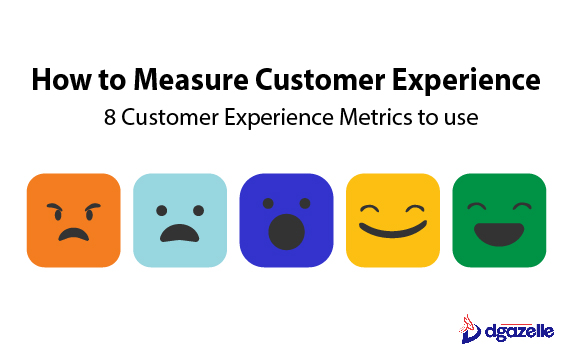
Introduction Customer experience, or CX, is the first impression that a business leaves on its patrons, shaping their perception of it and ultimately fostering brand loyalty. If there’s one thing I know about CX, it’s that using metrics to measure it can help increase customer retention. 75% of consumers will purchase more for products from companies that offer them a positive experience, according to the Zendesk Customer Experience Trends Report. Consequently, more than 60% of CX managers state that their organization now places a higher priority on customer experience than it did a year ago. Measuring customer experience and pinpointing opportunities for improvement is more crucial than ever in light of the increased focus on CX. Learn which CX metrics offer the greatest insight and how to use that information to continuously improve the customer experience to position yourself for success. What is customer experience? Customer experience (CX) refers to the journey of a customer’s or prospective customer’s interactions with a firm. I find it useful to consider that a customer’s experience begins the moment they learn about my company and proceed through the purchasing process. Furthermore, CX encompasses the weeks, months, or even years that pass after a consumer utilizes my service or product. Whatever kind of business you own, you most likely put a lot of effort into attracting customers and convincing them to buy from you. However, it’s also critical to consider the big picture. That can entail offering assistance to your clients years from now. Why is this extra effort and money worth it to the business? Gaining new customers is more expensive than keeping current ones, and 65% of consumers claim they would stop doing business with a company after a negative encounter. Measuring Customer Experience Customer experience is best thought of as a puzzle. Customer support is but one component of the whole. You want customers to respond favorably to your marketing and advertising campaigns. It should be simple for them to use your goods or services. Additionally, your staff ought to respond to them right away. All these components work together to create a satisfying experience for your customers. There are two main approaches to CX evaluation: After a customer interacts with your business, ask them directly about their experience by sending them questionnaires or survey. Monitor first-party customer support data to gain insight into the kind of customer experience (in terms of quality, speed, and efficiency) your team is offering. When measuring customer experience, i recommend a combination of the two approaches. Customer service surveys allow your consumers to provide feedback on how well you’re doing, while KPIs for customer service help you define performance targets and goals. You may monitor hundreds of distinct customer experience metrics, some of which are more crucial than others based on the kind of business you run. However, it in experience the metrics below are standard across all businesses. 1. Customer Satisfaction Score (CSAT) Despite being primarily employed as a measure of customer service, CSAT can also provide insight into the customer experience, as support contacts constitute a significant portion of customer experience (CX). This is a short survey that asks about a customer’s level of satisfaction after dealing with your company. Consumers typically assign ratings on a 0–5 or 0–10 scale. In any case, you acquire a percentage of satisfied consumers by multiplying your average score by 100. Because the scores range from 0 to 100, this makes them all comparable: How to Calculate CSAT All you have to do is send out a survey right after a purchase or interaction to find out CSAT. On a similar scale, this survey will inquire about the customer’s level of satisfaction with their experience. The survey’s average score is known as the CSAT. Source: Apizee The percentage of clients that give you a low rating is represented by your DSAT (customer dissatisfaction) score. While low scores suggest some touchpoints need work, high scores reflect a positive physical and digital consumer experience. 2. Net Promoter Score (NPS) One of the primary tools for assessing customer experience is the Net Promoter Score (NPS). The percentage of consumers that adore, tolerate, or detest your brand will be revealed to you by your net promoter score (NPS). I know it hurts to hear that some consumers don’t like your brand, but you need to know this information in order to make the necessary adjustments to enhance the customer experience. An NPS score splits your answers into three groups: Promoters (who score between 9-10) Passives (who score between 7-8) Detractors (who score between 0-6) Source: Apizee How to Calculate NPS On a scale of 0 to 10, you will ask your customers in a survey how likely they are to suggest your business to a friend in order to determine their net promoter score (NPS). Detractors receive scores 0–6, passives receive scores 7-8, while promoters receive scores 9–10. The percentage of detractor responses deducted from promoter responses is your net promoter score (NPS). 3. Customer Effort Score (CES) Your clients desire straightforward encounters, if they’re anything like mine. Navigating via your website should be simple. It should be simple to assemble and operate your products. And the consumer should find it simple to get in touch with your customer support representatives. The Customer Effort Score (CES) gauges how well customers communicate with your customer support representatives or product. According to a study by Salesforce, 80% of consumers think that a company’s customer experience is just as significant as its goods or services. Source: Apizee How to Calculate NPS The total number of survey responses you received divided by the sum of your customer effort evaluations is how you compute customer experience points, or CES. If users are rating a product as being difficult to use, you should come up with creative solutions to improve its usability. For example, if your website’s menu is difficult to find, you should rebuild it or use a simpler style to enhance the user experience. 4.
Content Marketing: Creating Valuable Content That Converts
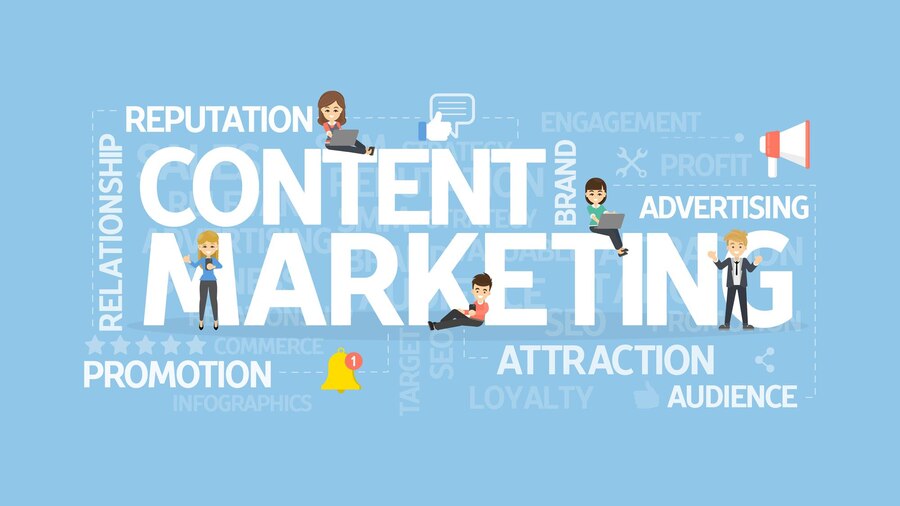
Introduction In the ever-evolving landscape of digital marketing, the art of creating compelling and valuable content has become a cornerstone for business success. However, if you find yourself grappling with the challenge of crafting curated content that truly resonates with your audience and drives conversions, you’re not alone. The ability to create content that not only engages but also converts is a skill that sets successful businesses apart. Many SMEs face difficulties in creating curated content that resonates with their audience and effectively converts leads into customers. In a crowded digital space, the struggle to capture and retain your audience’s attention while conveying your brand message can be overwhelming. The fear of producing content that falls flat or fails to connect with your target market may be hindering your business growth. This article serves as your comprehensive guide to unraveling the secrets of content marketing for SMEs. By the end, you’ll know how to professionally craft content that converts. Let’s embark on this journey to elevate your content marketing strategy and drive meaningful results. Image by rawpixel.com on Freepik The Power of Content Marketing Content marketing is not just about creating words on a page; it’s about crafting a narrative that resonates with your audience, solves their problems, and ultimately drives them to take action. Let’s explore why content marketing is a powerful tool for SMEs. 1. Building Trust and Credibility: Well-crafted content establishes your brand as an authority in your industry. By providing valuable insights, answering questions, and addressing pain points, you build trust and credibility with your audience. Trust is the foundation of customer relationships and conversions. 2. Educating and Informing: Content serves as a powerful educational tool. Whether it’s through blog posts, articles, or guides, you can educate your audience about your products or services, industry trends, and best practices. Informed customers are more likely to make confident purchasing decisions. 3. Creating Brand Awareness: Consistent and valuable content helps to increase brand visibility. When your content consistently appears in search results, on social media, and across various platforms, you enhance brand awareness. The more familiar your audience is with your brand, the more likely they are to choose you over competitors. 4. Nurturing Leads Through the Sales Funnel: Content plays a crucial role in guiding leads through the sales funnel. From awareness to consideration and decision-making, strategically crafted content caters to the needs of your audience at each stage. This nurturing process increases the likelihood of converting leads into customers. 5. SEO Benefits for Online Visibility: Search engines love fresh and relevant content. Regularly updating your website with high-quality content not only engages your audience but also boosts your search engine rankings. Improved SEO enhances your online visibility, making it easier for potential customers to find your business. The Content Creation Struggle: Why It Matters Before delving into the strategies of effective content marketing, let’s address the common challenges that SMEs face when struggling to create content and why overcoming these hurdles is crucial for business success. 1. Lack of Engagement: If your content is not engaging, your audience is likely to scroll past it without a second thought. The challenge lies in creating content that captivates, informs, and sparks interest. Engaging content is the key to capturing and retaining your audience’s attention. 2. Ineffective Conveyance of Brand Message: Your brand message is the essence of your business. If your content fails to effectively convey this message, you risk confusing or alienating your audience. Consistent and clear messaging across all content channels is crucial for building a cohesive brand identity. 3. Difficulty in Targeting the Right Audience: Creating content for the sake of content is a common pitfall. To be effective, your content needs to speak directly to your target audience. Identifying your audience’s needs, preferences, and pain points is essential for creating content that resonates. 4. Low Conversion Rates: The ultimate goal of content marketing just like video marketing is to drive conversions. If your content is not compelling enough to convert leads into customers, it falls short of its purpose. Crafting content that moves your audience through the sales funnel is crucial for achieving meaningful conversions. Ready to transform your content marketing strategy and create compelling content that converts? Our team specializes in crafting curated content that resonates with your audience. Contact us to discuss how we can help you elevate your content marketing efforts. Crafting a Strategic Content Marketing Approach Now that we’ve identified the challenges, let’s delve into the strategies that can transform your content marketing efforts into a powerful driver of conversions. 1. Know Your Audience: Understanding your target audience is the foundation of effective content marketing. Create buyer personas that outline the demographics, interests, and pain points of your ideal customers. Tailor your content to address the specific needs and preferences of your audience. 2. Develop a Consistent Brand Voice: Consistency in your brand voice builds trust and recognition. Whether your brand voice is casual, formal, humorous, or informative, maintain this tone across all content channels. A consistent brand voice contributes to a unified and memorable brand identity. this consistent brand voice also cut across your various social media platform, you can also use social media marketing to sync things. 3. Focus on Value-Driven Content: The key to engagement is providing value to your audience. Address their problems, answer their questions, and offer solutions. Value-driven content positions your brand as a valuable resource, fostering trust and loyalty. 4. Utilize Different Content Formats: Diversify your content to cater to different preferences. This includes blog posts, infographics, videos, podcasts, and more. Different audiences consume content in different ways, and offering a variety of formats ensures broader reach and engagement. Image by rawpixel.com on Freepik 5. Implement a Content Calendar: Consistency is crucial in content marketing. Develop a content calendar to plan and organize your content creation efforts. A calendar helps you stay on track, maintain a consistent publishing schedule, and align your content with key events or trends. 6. Optimize for SEO:
Email Marketing for Nigerian Businesses: Nurturing Leads and Driving Conversions

Introduction In the fast-paced world of digital marketing, the landscape is ever-evolving, and staying ahead of the curve is imperative for sustained growth. However, if you find yourself grappling with the challenge of effectively marketing your business through email, you’re not alone. The power of email marketing often remains underestimated, leading to missed opportunities for lead nurturing and conversion. Many Nigerian SMEs struggle to harness the full potential of email marketing, resulting in missed opportunities to nurture leads and drive conversions. In an era where personalized communication is key, the difficulty in leveraging email marketing to its fullest potential can hinder your business’s growth. The fear of not connecting with your audience in a meaningful way or failing to drive conversions may be holding your marketing efforts back. This article serves as your guide to unlocking the true potential of email marketing for Nigerian businesses. By the end, you’ll not only understand the nuances of effective email marketing but also discover a compelling offer to help you professionally market your business through this powerful channel. Let’s embark on this journey to transform your email marketing strategy. The Untapped Potential Email marketing is not just a tool; it’s a strategic avenue for building lasting relationships with your audience, nurturing leads, and driving conversions. Let’s delve into the untapped potential of email marketing and why it’s a game-changer for Nigerian SMEs. 1. Direct and Personalized Communication Email allows you to speak directly to your audience in a personalized manner. With the ability to segment your email list based on demographics, preferences, and behaviors, you can tailor your messages to resonate with different segments of your audience, fostering a deeper connection. 2. Lead Nurturing: Building Relationships Over Time Successful marketing is not just about the immediate sale; it’s about building relationships over time. Email marketing excels at lead nurturing by providing a consistent touchpoint for your audience. Through carefully crafted content and strategic email campaigns, you can guide leads through the buyer’s journey, building trust and loyalty. Email notification | Image by rawpixel.com on Freepik 3. Cost-Effective Marketing Strategy In comparison to traditional marketing channels, email marketing is cost-effective. It allows you to reach a large audience with minimal expenses, making it an ideal solution for SMEs with budget constraints. The return on investment (ROI) from well-executed email campaigns can be substantial. 4. Data-Driven Insights for Optimization Email marketing platforms offer robust analytics, providing valuable insights into the performance of your campaigns. From open rates to click-through rates and conversion rates, you can gather data that helps you understand what resonates with your audience. This data-driven approach allows for continuous optimization of your email marketing strategy. 5. Automation for Efficiency Time is a precious resource for SME owners. Email marketing automation streamlines repetitive tasks, allowing you to schedule and send emails at optimal times, trigger personalized responses based on user behavior, and nurture leads without constant manual intervention. This efficiency is a game-changer for businesses with limited resources. The Challenges of Ineffective Email Marketing Before diving into the strategies for effective email marketing, let’s address the common challenges that SMEs face when their email marketing efforts fall short. 1. Low Open Rates: If your emails are not being opened, your message remains unheard. Low open rates are often a result of unappealing subject lines, irrelevant content, or poor timing. Overcoming this challenge requires a strategic approach to crafting compelling subject lines and providing valuable content. 2. High Unsubscribe Rates: A surge in unsubscribe rates signals that your audience is disengaged or finding your content irrelevant. This challenge can be mitigated by understanding your audience’s preferences, segmenting your email list effectively, and delivering content that aligns with their interests. 3. Lack of Personalization: Generic, one-size-fits-all emails are less likely to resonate with your audience. The lack of personalization can result in disengagement. Overcoming this challenge involves leveraging data to segment your audience and delivering tailored content that speaks to their individual needs and preferences. 4. Ineffective Call-to-Action (CTA): The ultimate goal of email marketing is to drive specific actions, whether it’s making a purchase, signing up for a webinar, or downloading a resource. If your emails lack clear and compelling calls-to-action, achieving conversions becomes challenging. Crafting effective CTAs involves clarity, urgency, and relevance to your audience. Ready to transform your email marketing strategy and professionally market your business? Our team specializes in crafting compelling email campaigns that nurture leads and drive conversions. Contact us to discuss how we can help elevate your email marketing efforts. Crafting an Effective Email Marketing Strategy Now that we’ve identified the challenges, let’s delve into the strategies that can transform your email marketing efforts into a powerful driver of leads and conversions. 1. Build a Targeted Email List: The foundation of effective email marketing is a well-curated email list. Instead of focusing solely on quantity, prioritize quality by segmenting your list based on demographics, preferences, and behaviors. This allows you to deliver targeted content that resonates with specific segments of your audience. 2. Craft Compelling Subject Lines: The subject line is your email’s first impression, and it plays a crucial role in determining whether your email gets opened. Craft compelling subject lines that are clear, concise, and evoke curiosity or urgency. A well-crafted subject line sets the tone for the content inside. 3. Personalize Your Content: Personalization goes beyond addressing your recipient by their name. Leverage data to deliver content that aligns with the recipient’s preferences, behaviors, and past interactions with your brand. Whether it’s product recommendations, exclusive offers, or relevant updates, personalized content enhances engagement. 4. Provide Valuable Content: Your emails should provide tangible value to your audience. Whether it’s educational content, exclusive promotions, or industry insights, every email should offer something that makes your audience look forward to hearing from you. Valuable content builds trust and positions your brand as an authority in your industry. 5. Optimize for Mobile Devices: With a significant portion of email opens happening on mobile devices, it’s crucial to optimize your

